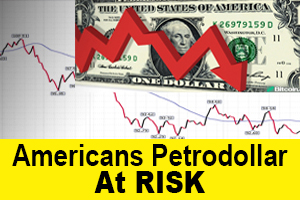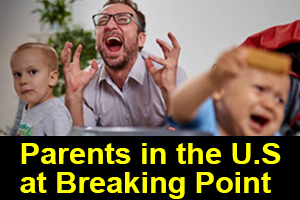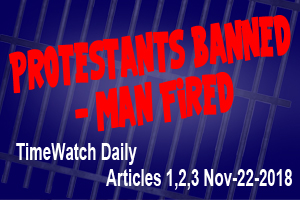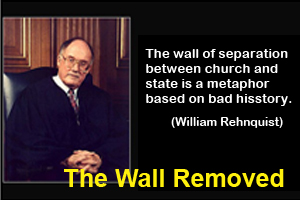

Puerto Rico earthquake aftershocks again rattle coastline as residents deal with disaster after disaster
By Arelis R. Hernández and Cristina Corujo
Jan. 11, 2020 at 5:35 p.m. EST
Gov. Wanda Vázquez Garced said Saturday that she had signed a request for a “major disaster declaration” that requires approval from the White House, a move that would release more resources for the power grid, building inspectors and individual assistance. The island is still waiting on more than $18 billion in federal funding after Hurricane Maria devastated much of the island in 2017.
Saturday‟s strong aftershock also worried residents along the island‟s southwest coast that the event might not be close to its end, as officials warned additional aftershocks could pose serious risks. Municipal authorities blame the earthquakes for at least three direct or indirect deaths, though the governor has confirmed just one death from the dozens of temblors — a Ponce man who was crushed by a falling wall in his home.
Garced said the powerful aftershocks are expected to lessen over time: “This kind of thing is not predictable, but what is happening is what we expected,” Garced said Saturday. “This was not a surprise.”
Public schools will not reopen until another round of inspections take place, and there are an estimated 8,000 people in shelters, camps or refuges. Nearly 60,000 people are without power, concentrated in the most impacted areas, a reminder that the island‟s frail electrical grid is vulnerable to natural disasters — some people went weeks or even months without power after Hurricane Maria, which was widely cited as a contributing factor in countless deaths in the aftermath of that storm.
The fallout from the worst disaster in Puerto Rico‟s history and last summer‟s political convulsions that resulted in upheaval and the ouster of a governor has left a population traumatized and distrustful of government at all levels. The hurricane, the resultant struggle for survival, the unsettled governance and now days of strong quakes have deteriorated the emotional and mental health of some of the poorest and most vulnerable citizens of the United States.
For the very old and the very young, in particular, this is an age of suffering here.
The relative safety net tethered together by years of rapid industrialization and economic progress began to fray a decade ago, leading the U.S. territory into financial ruin and sending a diaspora of Puerto Ricans seeking better opportunity to the mainland United States, draining the island of young talent. With each compounded tragedy and burden — and a sense that many in island leadership and on the mainland, including President Trump, have abandoned them — residents say any sense of stability has completely unraveled.
“We were lied to. Puerto Ricans feel like they can‟t trust anything around them and don‟t know where to turn for reliable information. These are what I call the „aftershocks of disaster,‟ ” said Yarimar Bonilla, quoting the name of a book she co-edited about the lasting impacts of
Hurricane Maria. “It‟s debatable if Maria was the beginning or if it was the economic crisis or the longer colonial history, but in Puerto Rico, there is an atmosphere of perpetual uncertainty produced not just by Mother Nature, but also the government.”
But suffering can produce perseverance. As they did in the powerless months after the hurricanes, Puerto Ricans found workarounds for the lack of water and electricity, tightened community bonds, created charities to fill the gaps in public services. But the resounding growls of an angry earth beneath their feet is unlike anything they‟ve faced before.
“We‟ve never had stable electricity service, but people have learned to manage and adjust to that.
Maria took us to the limit,” said Silma Quiñones Roldán, past president of the Puerto Rico Psychological Association. “We have learned how to cry and move forward at the same time, but there is fear that this event has sent us all backward.” 'Now there's nothing'
Angelica Hernández‟s heart hasn‟t stopped palpitating for a week. Her blood pressure spiked. She has constant headaches. Her toddlers, 2-year-old twins and a 21-month-old, are wandering, screaming, pacing and reacting to living underneath a government-supplied canopy with a set of camping cots.
“God give me patience,” said Hernández, 21, as she snatched toothbrushes from her daughters, the fourth set volunteers had distributed at Guánica‟s official camp. The unhappy shrieks were bloodcurdling. “A mi me va dar algo.”
Hernández embodied that Spanish colloquialism, hands on her forehead and chest as she tried to breathe deeply: If this doesn‟t get better, something bad is going to happen to me. She hasn‟t had any peace since the September 2017 tempest rendered her Yauco home uninhabitable. Her twins were 8 months old when Hernández and her husband began hopping from home to home during the extended islandwide blackout. They settled on a cement house in Guánica a few months ago.
“It was so comfortable and finally, we felt safe,” she said. The violent quake last week sent her racing outside as the ceiling cracked. The house across the street collapsed.
While Hernández‟s husband works and locates supplies during the day, the young mother can hardly manage the hyperactivity and fussiness of her girls. She said she noticed a marked change in the twins‟ behavior after Maria and recalls feeling her youngest agitated in her womb during the pregnancy. She consulted with pediatricians, and all the family is convinced that her children bear the scars of the crisis of the past two years.
Psychologist Rosaura Orengo-Aguayo of the Medical University of South Carolina published a report in April analyzing a public school survey that showed that about 1 in 14 of Puerto Rico‟s children reported symptoms of post-traumatic stress disorder. In the months after the hurricane, there were a series of adolescent suicides in coastal towns that had suffered the brunt of the damage and prolonged power outage.
Orengo-Aguayo said people who live through adversity naturally build resiliency, but she said there are serious concerns that Puerto Ricans are spending too long in “survival mode,” managing high levels of stress and anxiety, which can be devastating.
“If they don‟t see any signs of hope soon, conflicts will start erupting,” she said. “Intimate relationships can become violent, and desperation can lead to suicide.”
Victor Auffant Jr., 59, can no longer sleep near the 14 other members of his extended family in the informal encampment on the baseball field in Barrio La Laguna here in Guánica. He blows up at his sisters, loses control and escapes during the day to his crumbling home in another barrio, La Luna, to figure out whether there is any way to save the four-story house he built.
“Everything is out of control,” Auffant said, anger rising in his voice. “I built this house to leave something for my children. Now there‟s nothing.”
Auffant‟s personal losses since 2017 have made this moment all the more unbearable. His marriage fell apart and his 24-year-old son was shot and killed. Two brothers died, one of cancer and the other of an apparent accident. Six months ago, a stroke crippled his father.
“God is tired of us,” he said. He can‟t begin to think about the future but wants an explanation for all of the suffering. When Auffant can focus, it is on solving daily problems. But when he feels overwhelmed, he lashes out at family. “This is driving me crazy.”
The list of needs at these informal camps grows every day. Afraid their homes will collapse on them, neighbors have set up more than a dozen encampments in Guánica and scores more in other pueblos. There is usually one toilet for more than 50 people. Dialysis patients sit out in the sun. The infirm sleep on the ground or in cars. Children go to bed wearing sneakers, ready to run if they feel a rumble.
“The nights are eternal,” said Helga Acosta, 60, who is living in a clearing with nine other families in the isolated Media Quijada neighborhood of Guayanilla. “You sleep 45 minutes, then you hear it coming. You‟re awake for an hour and then sleep another 45 until the next one. Seeing the sun rise is the only relief.”
Municipal governments are encouraging everyone to move into official camps — where there are nonprofit groups, government officials and a way to keep track of everyone — but many residents say the chaos is too much. Many are trying to patch together an existence with their neighbors, much like they did two years ago.
“We learned in Maria that we need each other,” said Onofre Velez, 65, as he sat in a circle with his neighbors where they had been talking all day. The community is accessible by three small bridges in danger of collapsing and cutting them off. “We never wait on anyone to help us anymore. There‟s never any money, and the feds are far away.”
The days are boring and the nights are long and terrifying, but Media Quijada neighbors cope with jokes. They throw up three or four fingers at each other, laughing and arguing over the intensity of each aftershock. They look to the trees and listen intently to anticipate aftershocks, joking about who has the best radar for detecting the next quake.
“We‟ve even found a new use for those tarps from FEMA,” said Manuel “Papo” Vargas, pointing to a giant blue sheet draped over ladders to create a shelter. Underneath, they placed a bed frame and a fancy couch for the comfort of the oldest camp residents.
Volunteers and military personnel show up on occasion at these far-flung communities, delivering food, mosquito repellent and diapers. Celebrities visit with toys and games, clowns come to entertain and distract, and the Boy Scouts are setting up tents to help the displaced.
Benytza Toro Cora is seven months pregnant, but that hasn‟t stopped her from helping her husband, José Flores Rodríguez, load up their cargo van with all the supplies people in town have requested. They used donated funds to make big Costco purchases and spend their afternoons delivering bottled water, wet wipes and batteries.
“I don‟t panic, but I‟m scared for the defenseless. I stay empowered by trying to help my neighbors,” said Toro Cora, 36, who lives in Guánica but whose home has so far resisted damage. “It‟s not just about supplies. When we come, everyone recognizes the van and comes out to talk and work through their anxieties. We keep each other sane.”
Jacqueline Santiago, 40, smiled when she saw Flores Rodríguez, who handed her a set of adult diapers and wipes to help her care for an elderly man. Night was falling quickly, and there was no power in Barrio Bélgica, where her family is camped in their backyard.
“This is the time of day I start getting nervous,” said Santiago, who is in a treatment program for anxiety and depression. Tuesday‟s earthquake, she said, set her into a full panic. It was her sister‟s prayers and her medication that eventually helped her calm down. “I spent all day crying.”
Santiago has relaxed in the days since, as the aftershocks became less frequent and less potent. She comforted herself by going to work as a health-care aide and trusting in the word of scientists that the worst is likely over and the possibility of another strong quake is minimal.
As Santiago turned to go home from work, what felt like a current moving underneath her reverberated and the street pulsed up and down for about five seconds. She tried to stabilize herself against a cargo van and let out a wail amid a 5.2-magnitude aftershock.
Flores Rodríguez wrapped his burly arms tightly around Santiago as she buried her face in his shoulder, crying inconsolably.
Corujo, a freelance journalist based in Puerto Rico, reported from San Juan.







